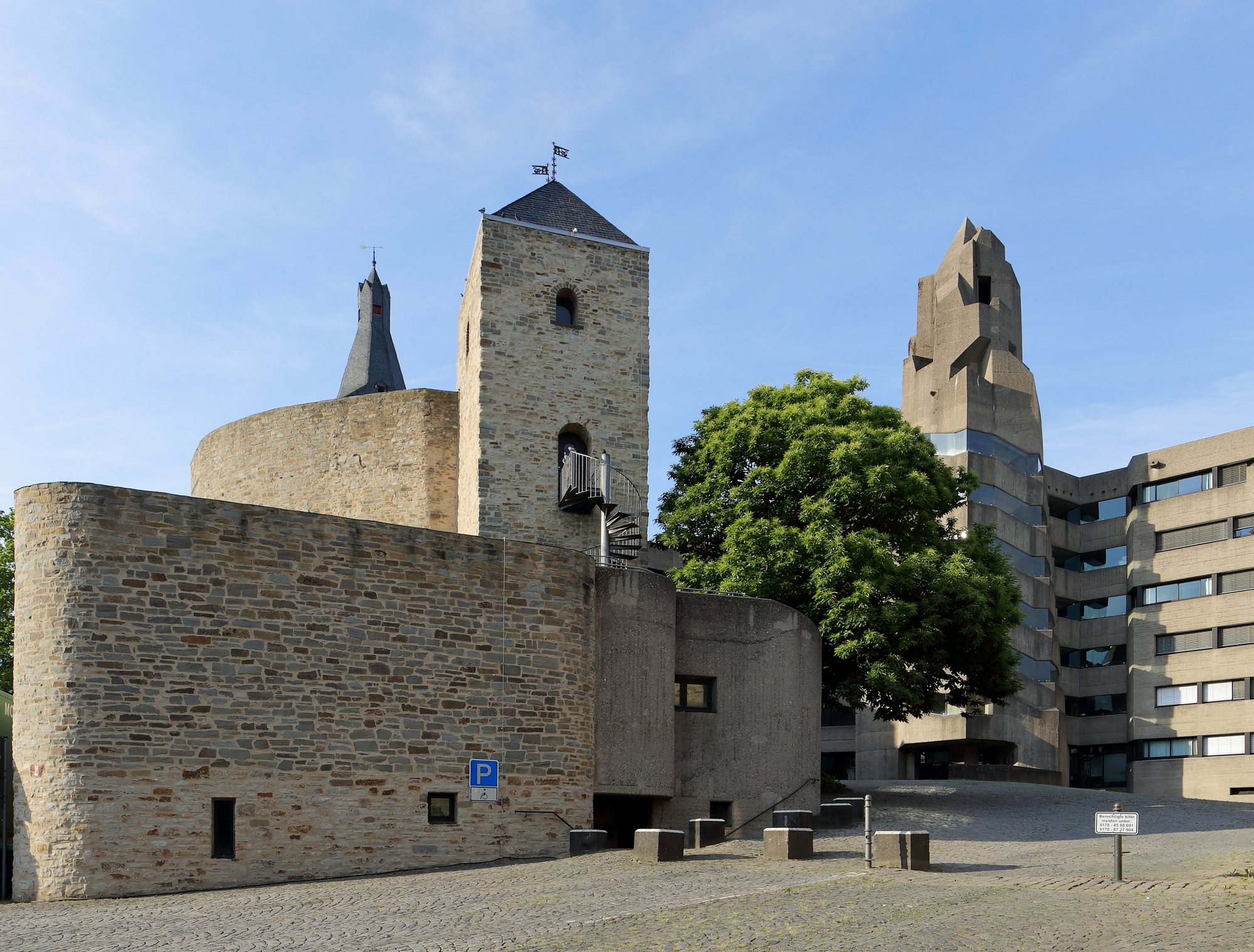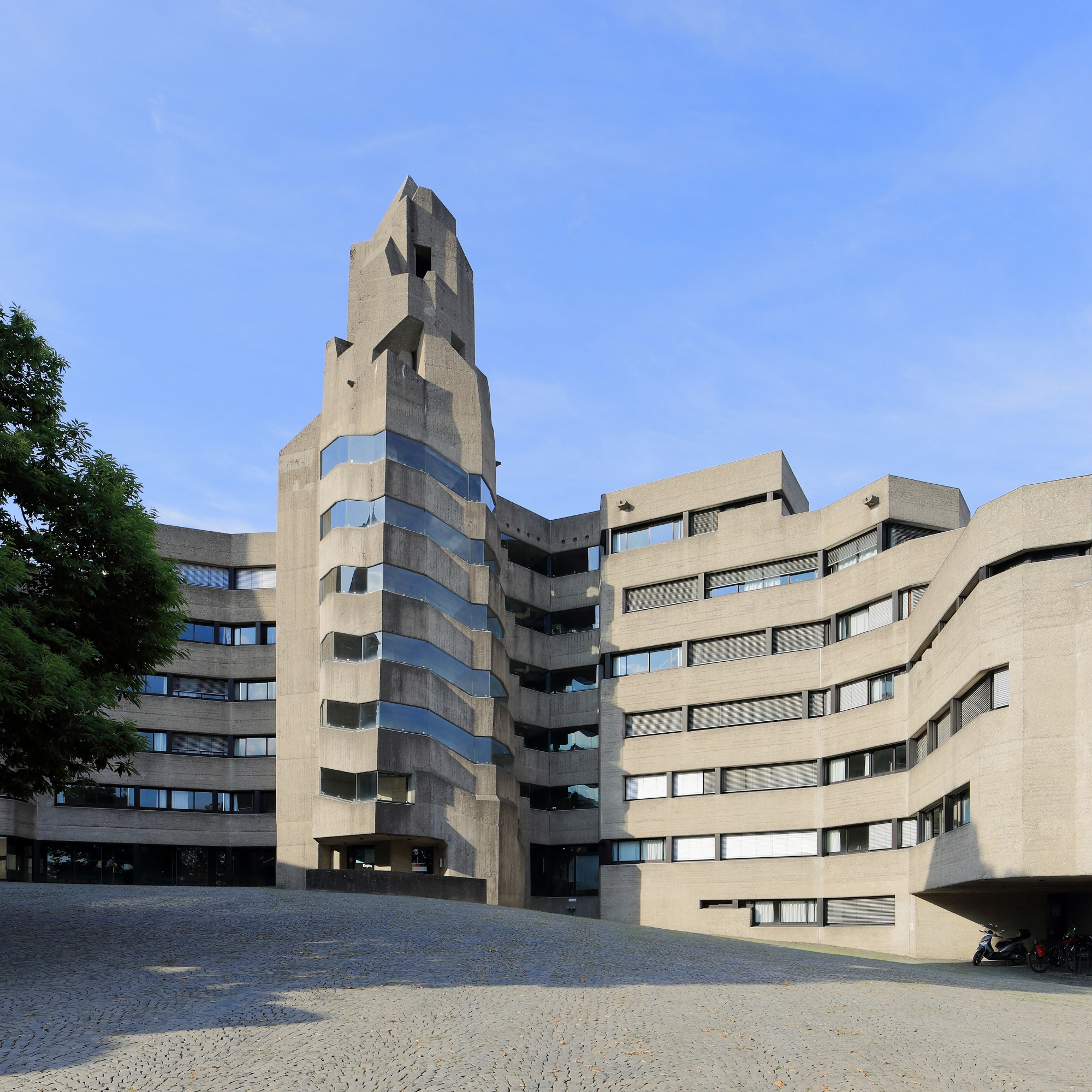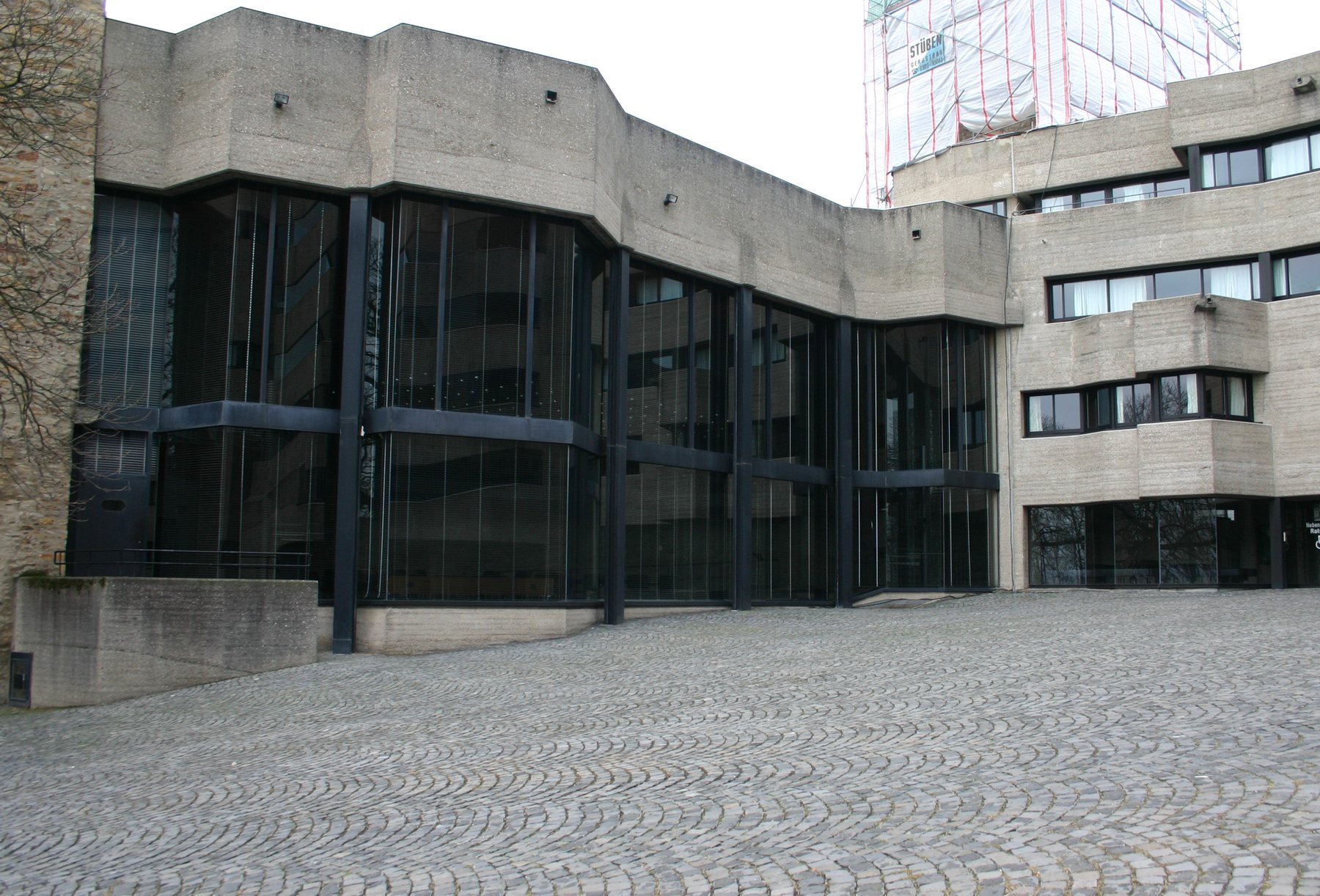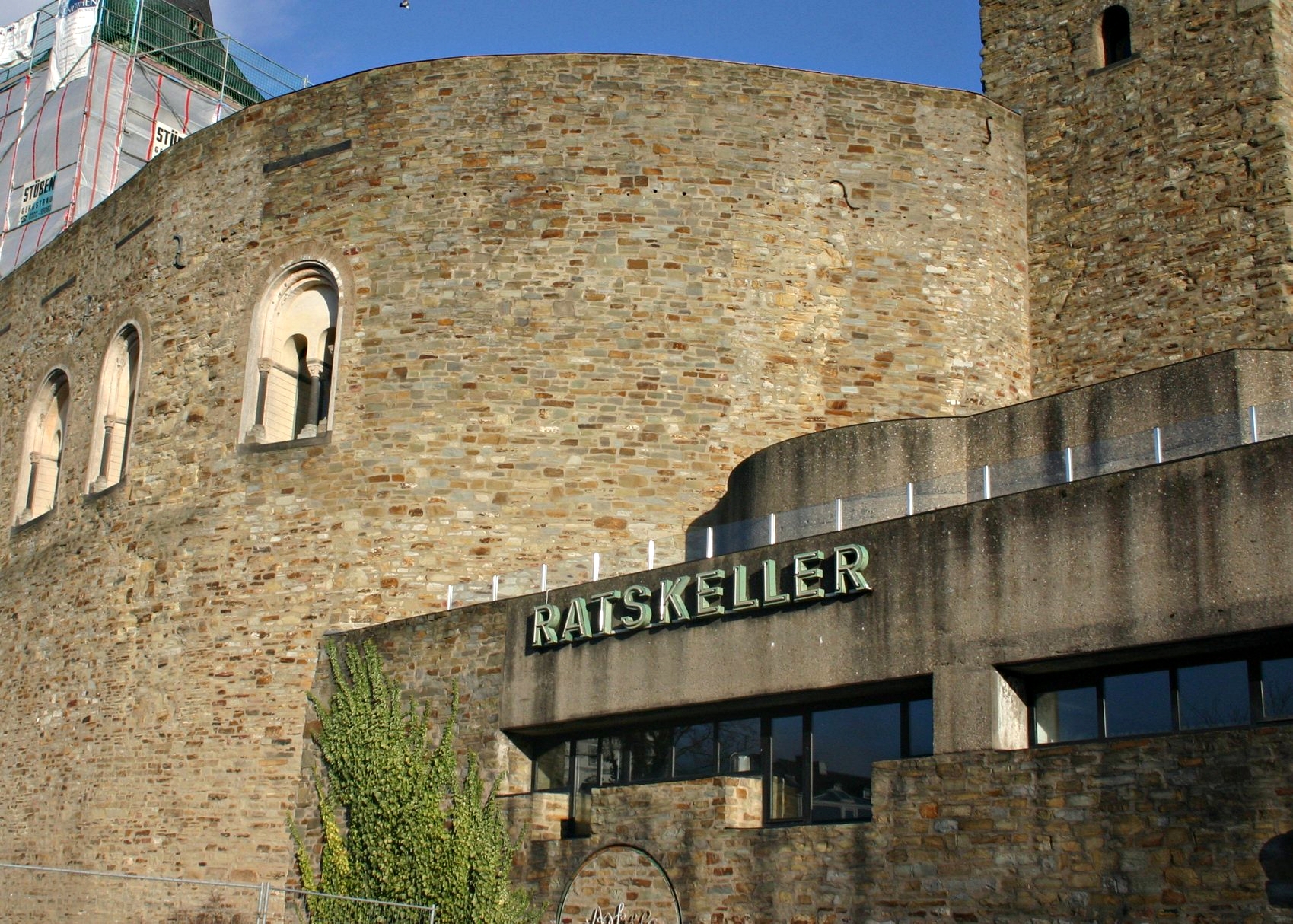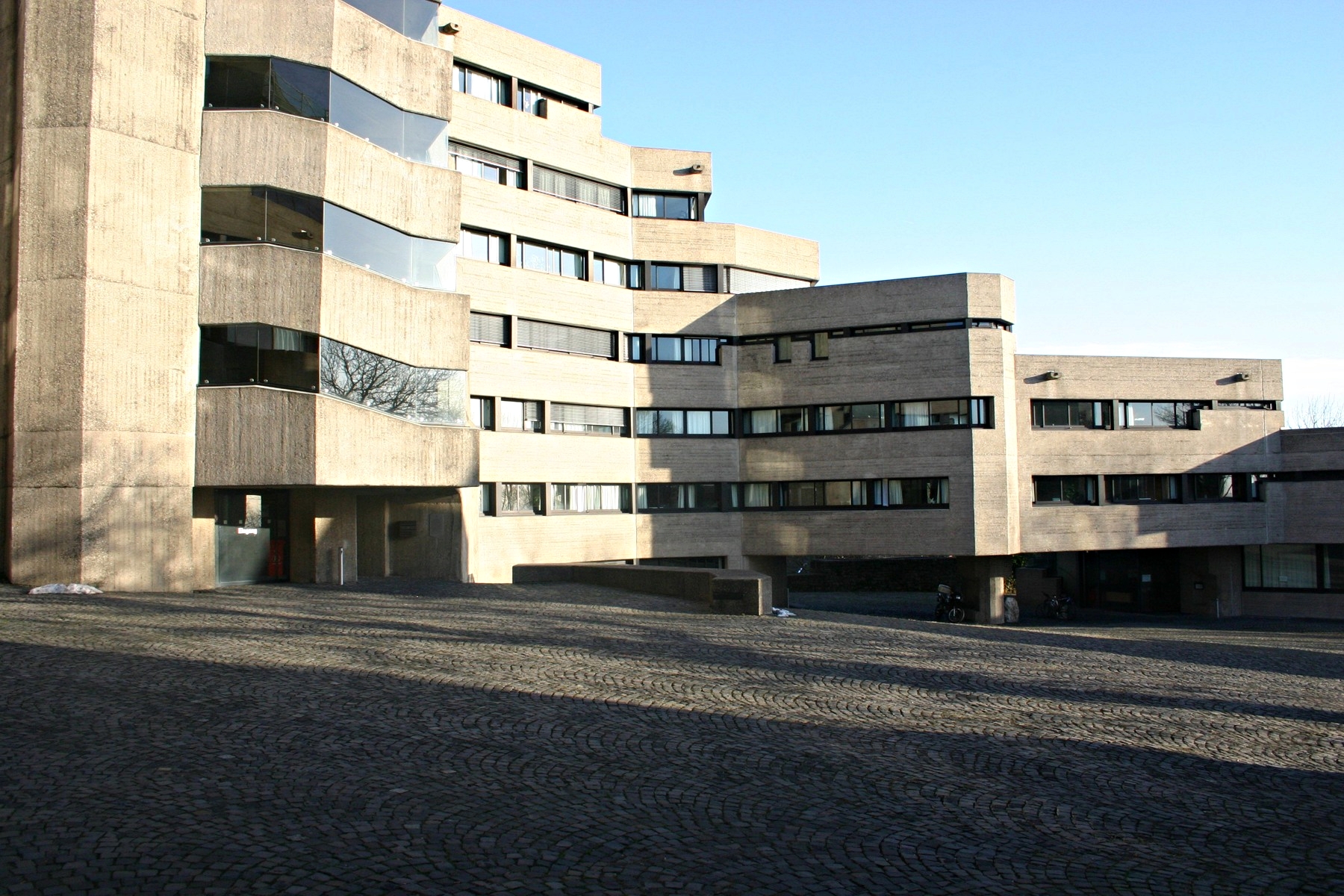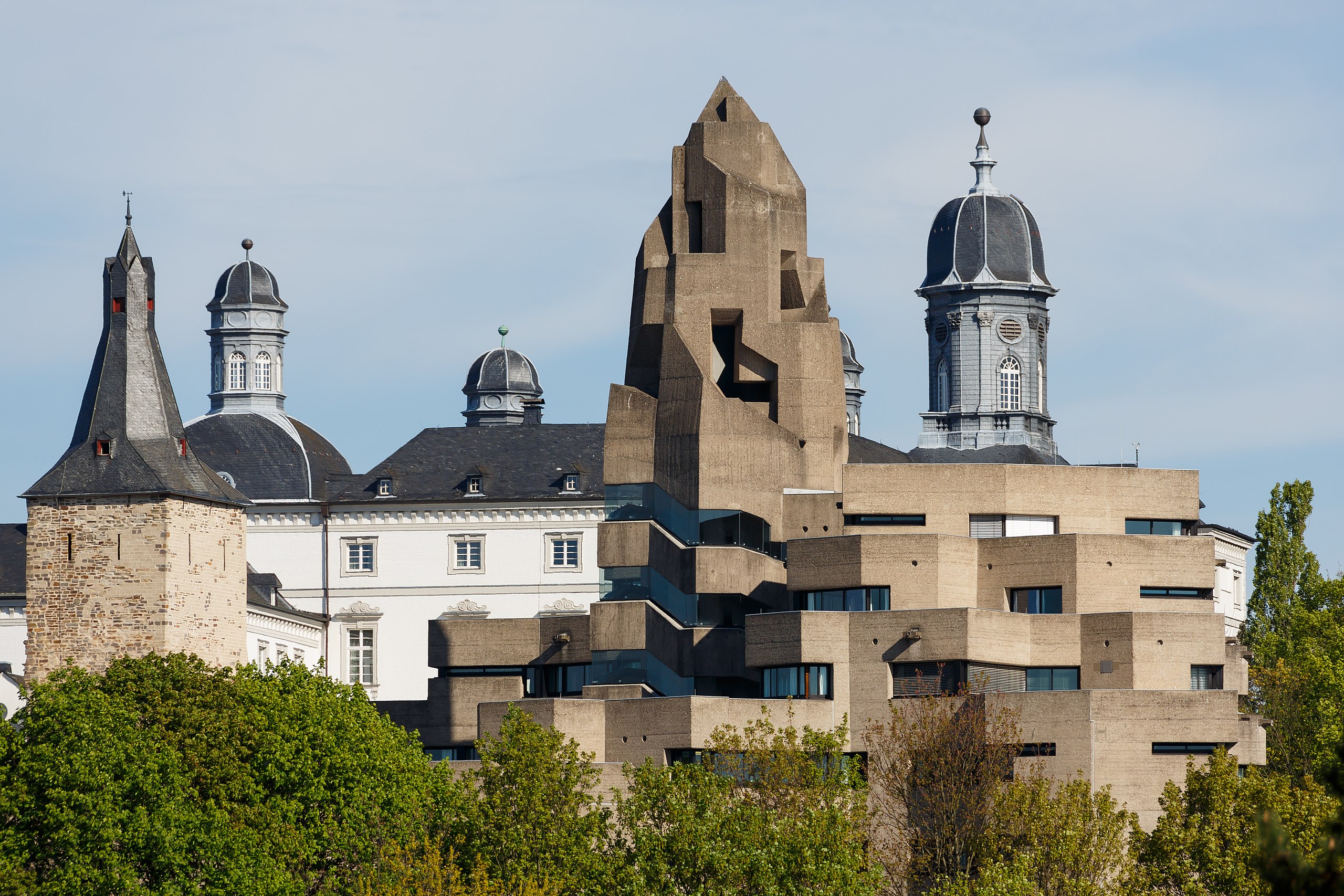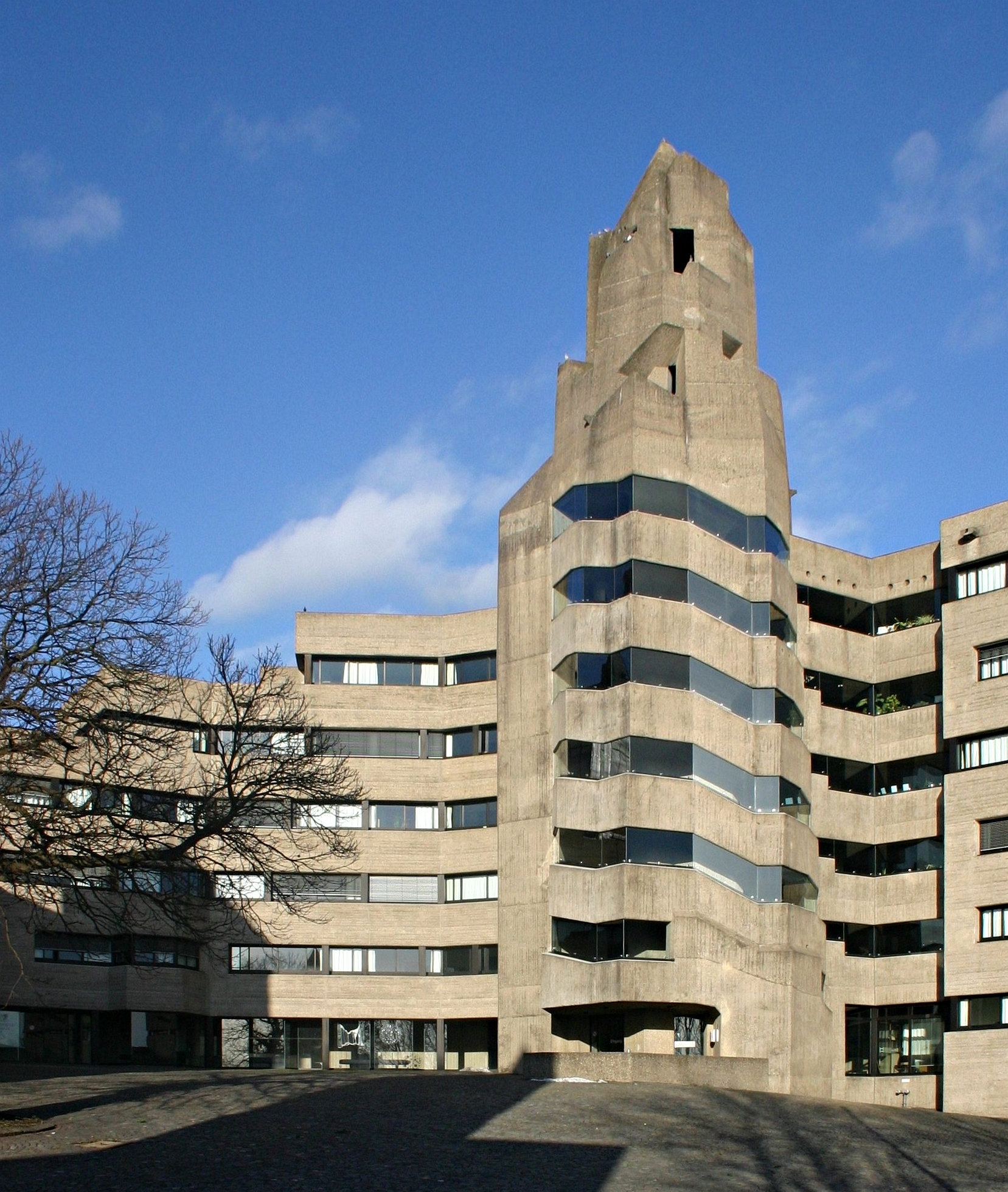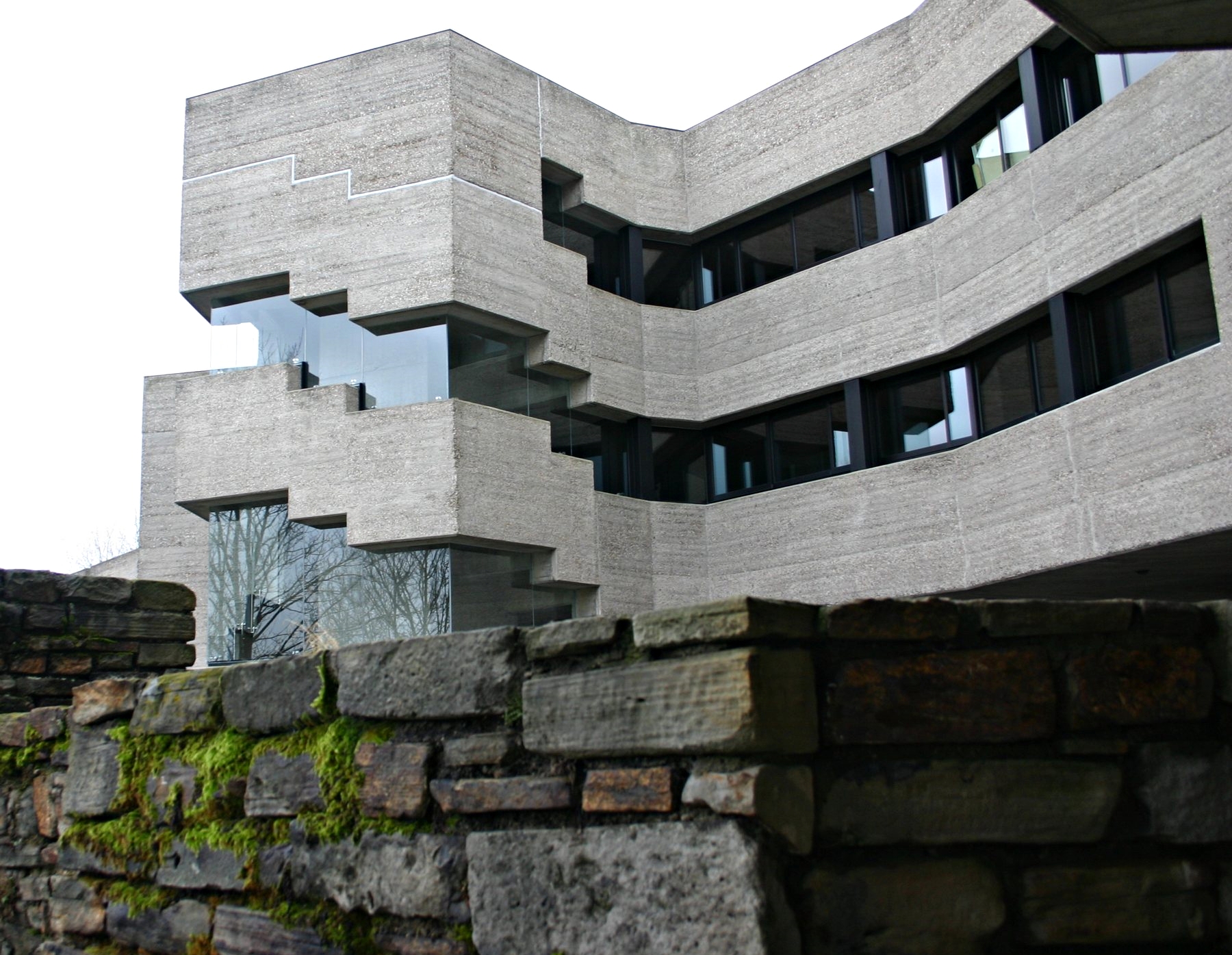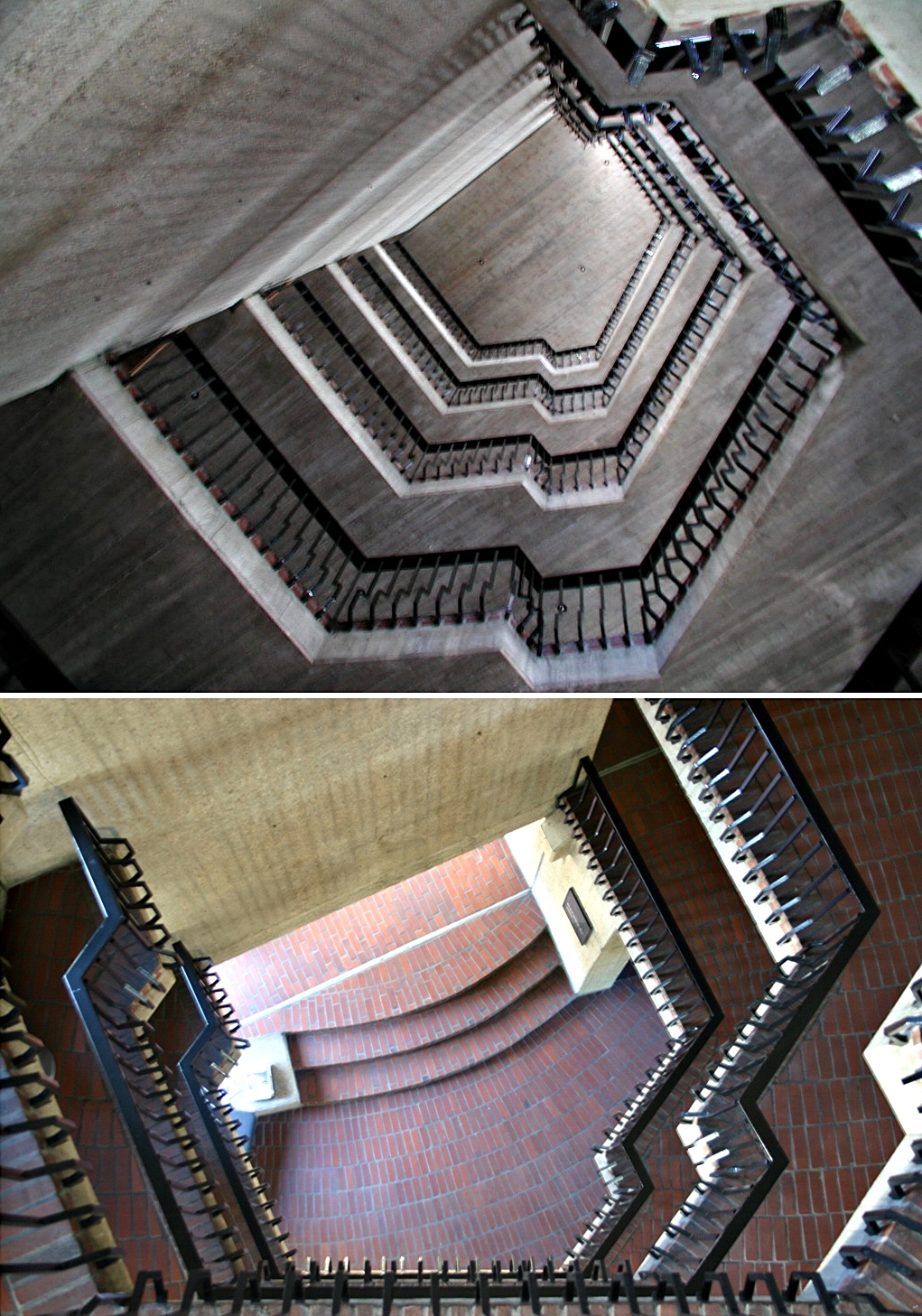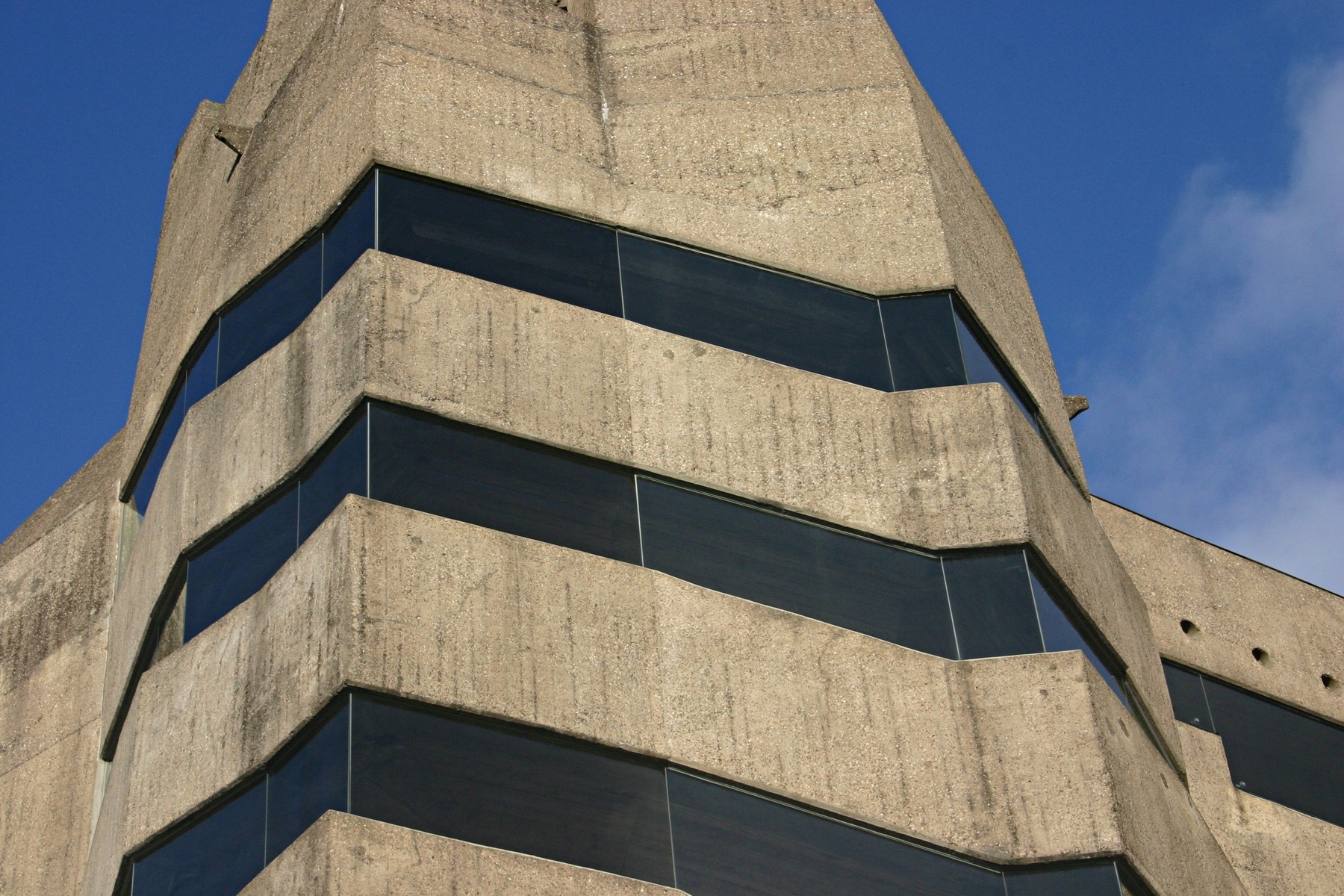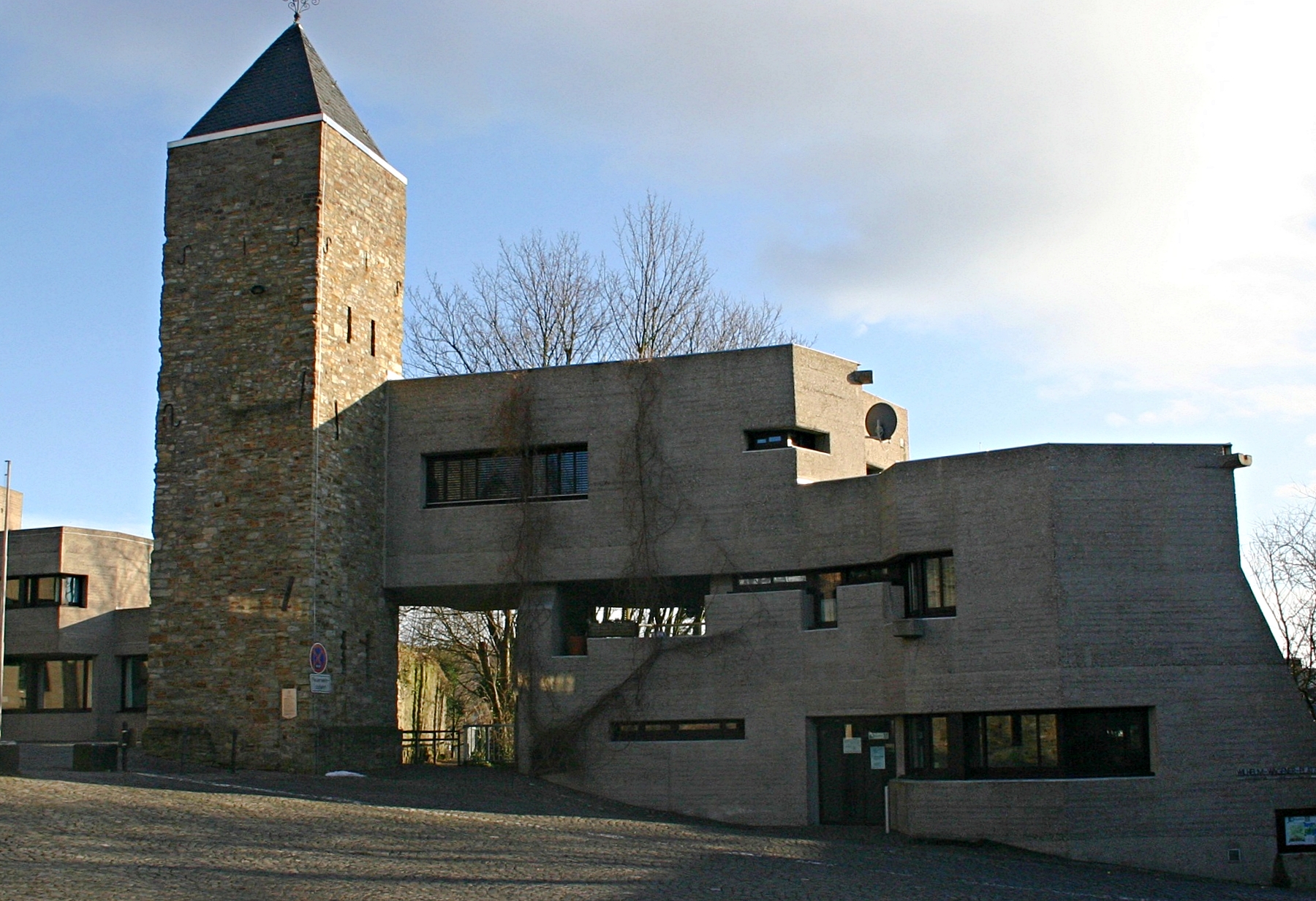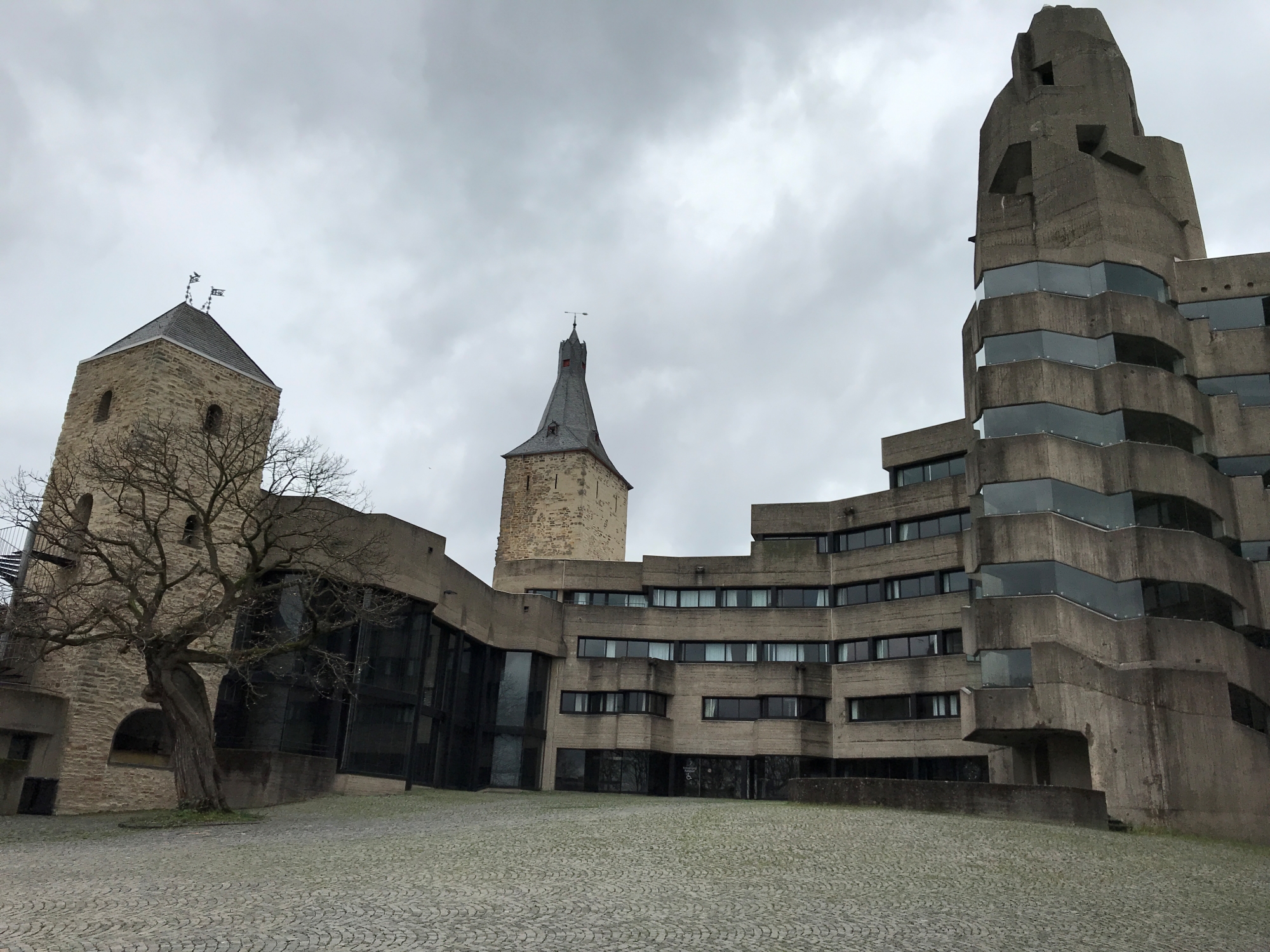Bensberg Castle is a medieval complex in Bergisch Gladbach, North Rhine-Westphalia. Between 1962 and 1972, it was extended according to the plans of architect Gottfried Böhm to include a controversial section housing the town hall. Today it exemplifies one of the most interesting examples of Brutalism in Germany. The pure concrete, the massive tower cast in sculptural forms and the contrast with the historic castle buildings still have an impact on the public, more than 50 years after its construction.
The first buildings of Bensberg Castle date back to the 12th century. The building was planned as a defensive structure from the beginning. A moat was created in the south-eastern and southern parts, together with a curtain wall. To get inside, one had to cross a drawbridge, which existed until the 1960s. The development of firearms at the end of the 14th century meant that the castle was increasingly extended for residential purposes. From 1413 onwards, it was no longer referred to as a castle, but as a palace and the Bensberg manor.
North-east side of Bensberg Castle, view from 1826. Photo: http://www.lust-auf-bensberg.de/bensberg/burg/burg.htm
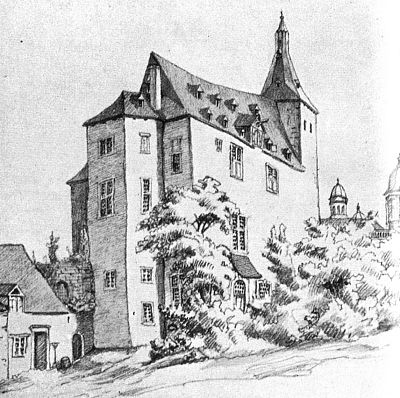
The devastation of the Thirty Years’ War caused the building to slowly fall into disrepair. The building was then used as a hospital for imperial troops. In 1859, a monastery was built on the castle complex and at the end of the 19th century a Catholic hospital was established, which operated until the 1950s. In 1962, the council of the then town of Bensberg decided to convert the building into a new town hall.
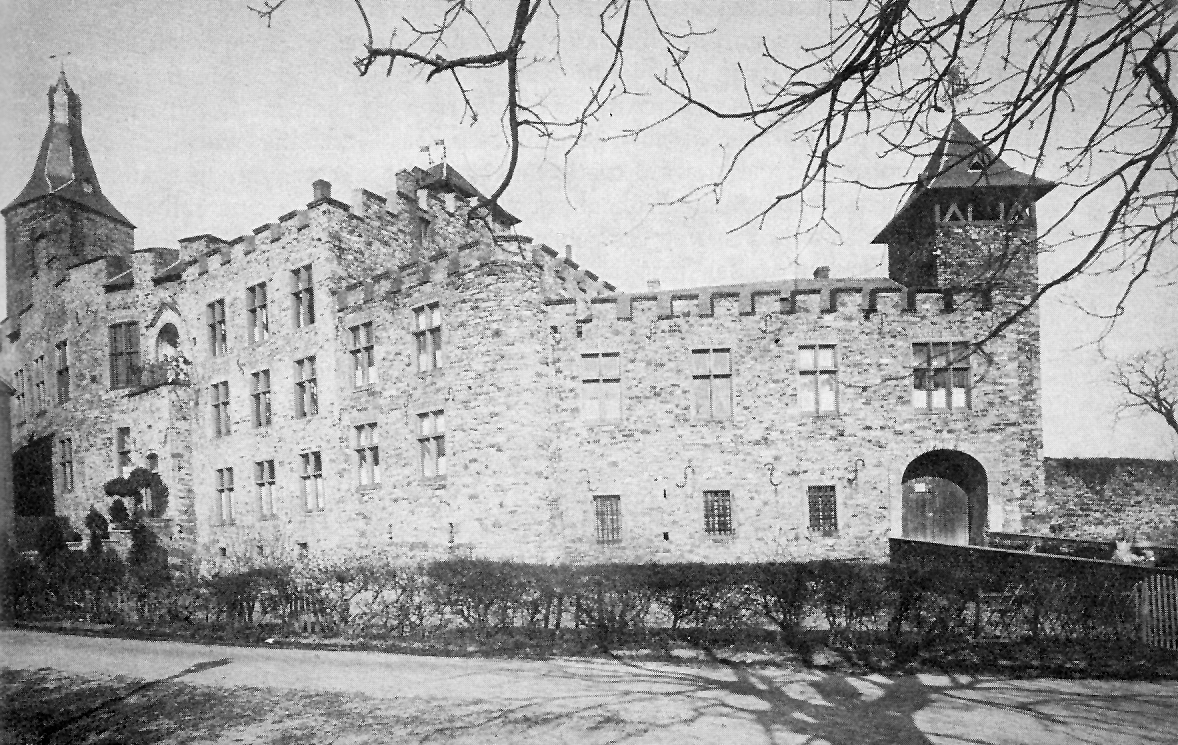
At the end of the 1950s, the need for a new and functional town hall building grew in Bensberg. The chosen location was the Old Castle. As a first step, the existing remains were inventoried and secured. Elements from before 1850 were included in the plan. These included a pentagonal donjon from the 12th century, the Engelbert tower, the outer wall between them, the former castle portals, a vaulted cellar and another smaller tower. These elements, together with the old castle wall in a ring pattern, formed the basis of the new building.
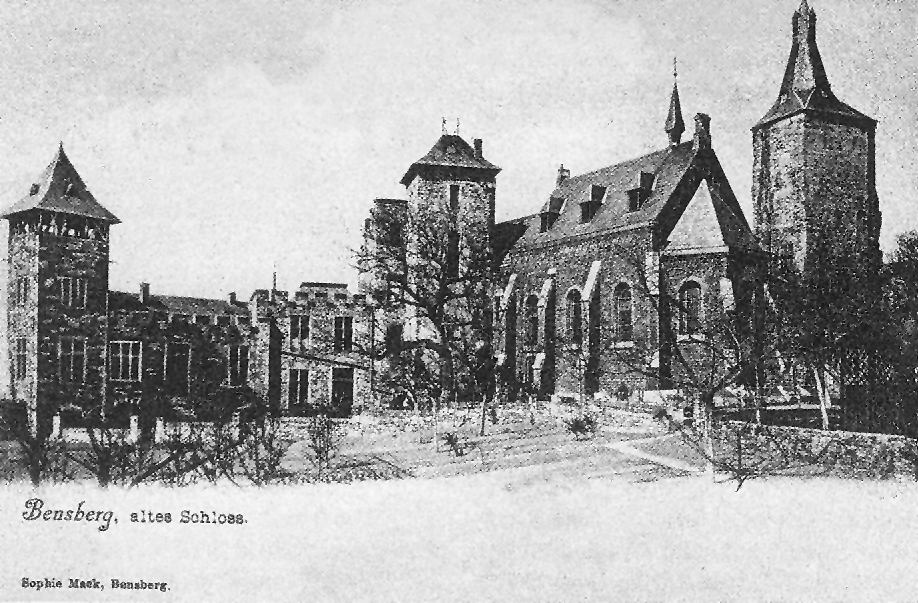
The integration of the remains of the old castle and the associated linking of history with the present day became part of the tender in favour of the design by architect Gottfried Böhm. Also decisive was the departure of Böhm’s model from the monotony of 1960s architecture. The jury recognised the project as an artistic response to an urban planning task. The concept of the inner courtyard with the counterpoints of the stair tower was exposed. The whole is characterised by strips of windows and an austere, monolithic form.
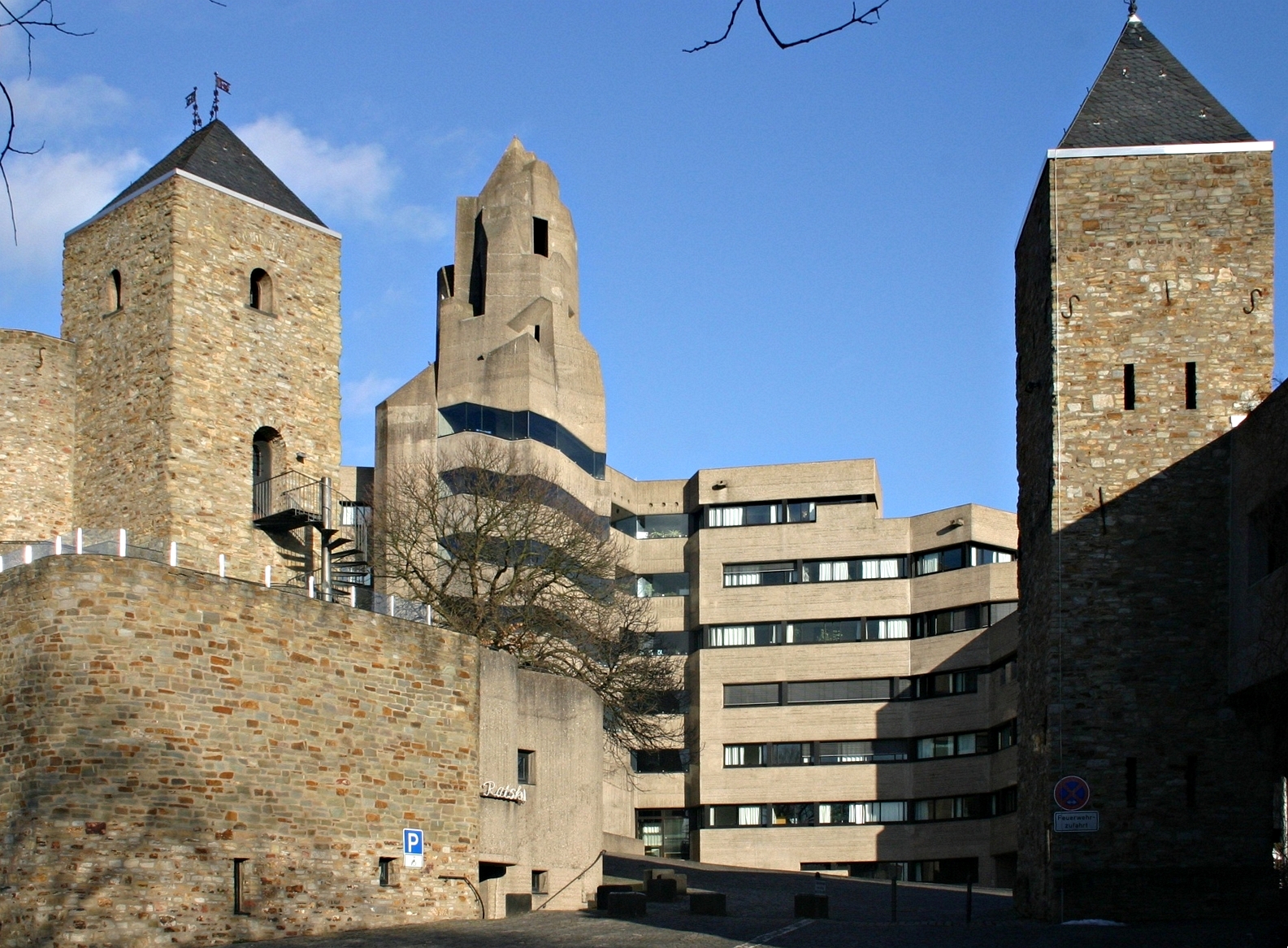
The building was very polarising from the beginning and aroused various emotions. However, the positive ones prevailed at the time, with many architectural circles appreciating the new structure for its innovative form and dialogue with the historic castle buildings. The interior of the building is characterised by the aesthetics of exposed concrete, from which all the walls and ceilings are made. The concrete elements include various openings and niches. The ceilings in the area of the corridors to the offices are covered with light brown matt wood panels. All floors and stairs are made of red brick. This gives the building an almost sacred atmosphere.
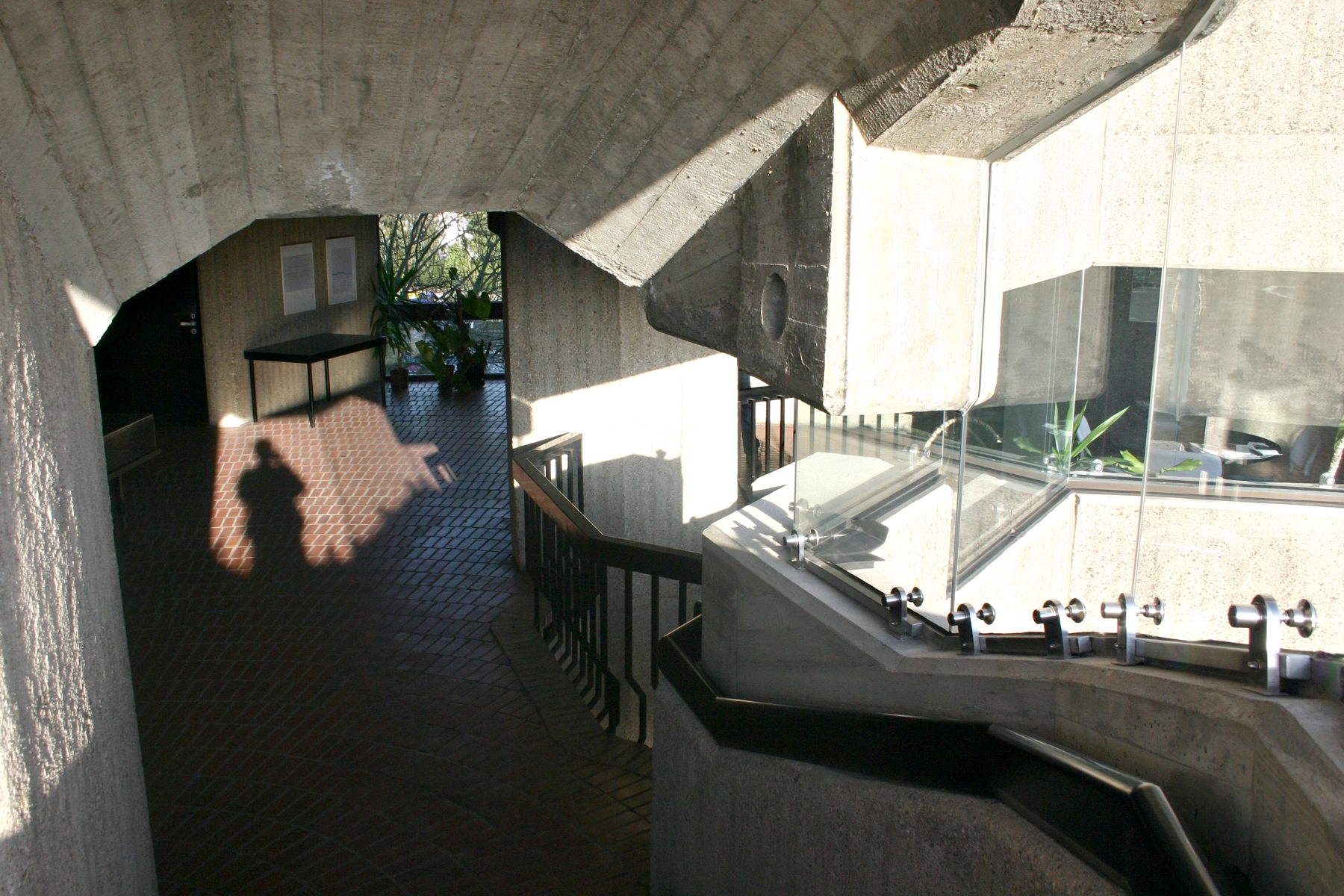
Until the merger of the two former towns of Bergisch Gladbach and Bensberg into one municipal body in 1975, Bensberg’s town hall office was located in a Brutalist building. After the reorganisation of the municipality, the municipal administration was moved to other buildings in Bergisch Gladbach. The building now houses the technical department of the municipal administration. Council and committee meetings are also held here. In addition, concerts and various events are held in the town hall and the inner courtyard.
Source: beton.org
Also read: Architecture | Brutalism | History | Concrete | Germany





